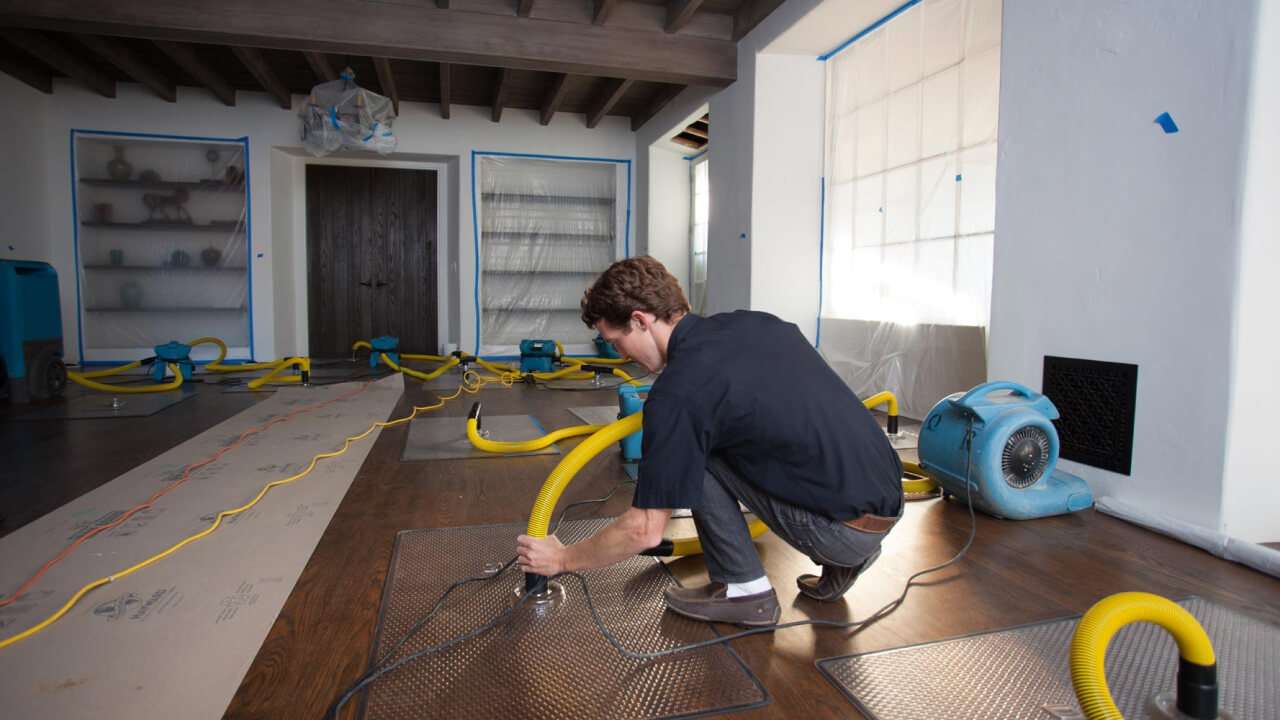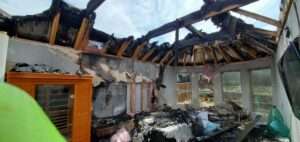Blogs
Water Damage Cleanup Checklist for Plano Residents

If you’re dealing with water damage, having a solid plan is crucial. Whether it’s from a burst pipe or heavy rain, the key is to act quickly. Start by assessing the damage, making sure to shut off any power in affected areas. Then, focus on drying out the space to prevent mold growth. For professional help, Intensa Dry is a great choice—they specialize in efficient water damage cleanup and can guide you through the restoration process. Follow these steps to get your home back to normal and ensure it’s safe and dry!
1. Stay Safe First
Before beginning any water damage cleanup, prioritize safety by shutting off electricity in affected areas to avoid electrical hazards. Wear protective gear such as gloves, boots, and masks to shield yourself from contaminants and mold. Avoid entering areas with severe structural damage and, if necessary, seek professional help to handle unsafe conditions. Ensuring these safety measures are in place will help protect you from potential risks and make the cleanup process safer and more manageable.
Before you even think about starting cleanup, your safety is the top priority. Water damage can pose several risks, so take these precautions:
Shut Off Electricity:
If the water has reached any electrical outlets or appliances, turn off the power at the main circuit breaker. Water and electricity are a dangerous combination.
Wear Protective Gear:
Put on gloves, boots, and a mask. This will protect you from contaminants and harmful substances that might be in the water.
Avoid Hazardous Areas:
If the damage is extensive, avoid entering areas where structural integrity might be compromised. Let professionals handle it if you’re unsure.
2. Assess the Damage

Once you’ve ensured that it’s safe to proceed, it’s time to assess the damage:
Check for Immediate Threats:
Look for any signs of structural damage like sagging ceilings or warped floors. Address these issues with caution.
Identify Affected Areas:
Walk through your home and take note of all the areas that have been affected by the water. This will help you understand the scope of the damage.
Document Everything:
Take photos or videos of the damage for your insurance claim. This documentation will be crucial when filing a claim and working with restoration professionals.
3. Stop the Water Source
To prevent further damage, you need to stop the source of the water:
Fix Leaks:
If a pipe has burst, shut off the main water supply and repair or replace the damaged pipe.
Tarp Leaky Roofs:
For roof leaks, use a tarp to cover the affected area temporarily until you can get it professionally repaired.
4. Remove Standing Water
Getting rid of standing water as quickly as possible is crucial to prevent mold growth and further damage:
Use a Wet/Dry Vacuum:
If the water is minimal, a wet/dry vacuum can help remove it. Be sure to empty the vacuum frequently.
Call in the Professionals:
For large amounts of water, it’s best to call in professionals like Intensa Dry, who have specialized equipment to handle the job efficiently.
5. Dry Out the Area
After removing the standing water, focus on drying out the affected areas:
Open Windows and Doors:
Increase ventilation by opening windows and doors to allow fresh air to circulate.
Use Fans and Dehumidifiers:
Set up fans and dehumidifiers to speed up the drying process. Place fans in a way that promotes airflow and helps dry out carpets and walls.
Remove Wet Materials:
Take out wet carpets, rugs, and furniture. These items can trap moisture and become breeding grounds for mold.
6. Clean and Disinfect
Water damage often brings with it a need for thorough cleaning and disinfection:
Clean Affected Surfaces:
Use a mild detergent and water to clean all affected surfaces. For harder surfaces, such as wood and tile, make sure to scrub and disinfect thoroughly.
Treat Mold and Mildew:
If you spot any mold or mildew, use a specialized cleaner or a mixture of water and bleach to treat the area. Be sure to follow safety guidelines when handling mold.
7. Inspect for Hidden Damage
Sometimes, water damage isn’t immediately visible. Look for signs of hidden damage that might not be apparent:
Check Behind Walls and Under Floors:
Water can seep behind walls and under floors. Use a moisture meter to detect hidden dampness.
Inspect for Warping and Discoloration:
Look for warping or discoloration in walls, ceilings, and floors as these can indicate hidden damage.
8. Restore and Repair

Restoring and repairing a damaged wall involves cleaning the area, patching any holes or cracks with joint compound, and sanding it smooth before repainting. For more extensive damage, such as structural issues or significant deterioration, reconstruction services may be necessary. This can include rebuilding sections of drywall, repairing framing, or addressing underlying problems. Professional reconstruction ensures that your home is not only restored but also structurally sound and safe for future use.
Once everything is dry and clean, it’s time to focus on restoring and repairing your home:
Repair Structural Damage:
Fix any structural issues like warped floors, damaged drywall, or sagging ceilings.
Replace Damaged Items:
Replace any items that couldn’t be salvaged, such as carpets, insulation, or drywall.
Paint and Refinish:
After repairs, you may need to repaint walls and refinish surfaces to restore them to their original condition.
9. Prevent Future Damage
To prevent future damage, regular maintenance and prompt attention to leaks or drainage issues are essential. During water damage cleanup, it’s crucial to focus on preventing secondary damage by thoroughly drying out all affected areas and addressing mold growth immediately. Install water alarms and improve drainage around your home to minimize the risk of future issues. Taking these preventive measures helps safeguard your property and reduces the likelihood of extensive damage from recurring water issues.
Now that you’ve tackled the immediate damage, think about ways to prevent future issues:
Regular Maintenance:
Keep up with regular home maintenance, including roof inspections and plumbing checks.
Install Water Alarms:
Consider installing water alarms in areas prone to water damage, like basements or near appliances.
Improve Drainage:
Ensure proper drainage around your home to prevent water from pooling near your foundation.
10. Seek Professional Help
When dealing with extensive water damage, seeking professional help is crucial. Experts in water damage mitigation services can quickly assess the situation, remove standing water, and dry out affected areas to prevent further issues. They also provide comprehensive cleanup and repair, including addressing mold growth and structural damage. Professional services ensure that your home is restored efficiently and effectively, reducing the risk of long-term damage and ensuring a safe environment.
Sometimes, water damage is too extensive or complicated to handle on your own. That’s where professionals come in. Intensa Dry specializes in water damage cleanup and restoration, offering expert services to get your home back in shape. Their team can handle everything from water extraction to structural repairs, ensuring your home is safe and restored properly.
FAQs
How to clean up after water damage?
To clean up after water damage, first remove any standing water using a wet/dry vacuum or professional water removal services. Next, thoroughly dry the affected areas with fans and dehumidifiers, and clean surfaces with disinfectants to prevent mold growth. Finally, inspect for any hidden damage, repair structural issues, and replace any damaged materials to restore your home.
What is the best way to fix water damage?
The best way to fix water damage is to quickly and thoroughly remove any standing water and dry out the affected areas using fans and dehumidifiers. Next, address the source of the water to prevent future issues and repair any structural damage, such as replacing damaged drywall or flooring. Finally, clean and disinfect the area to prevent mold growth and ensure a complete restoration of your home.
How do you check for water damage?
To check for water damage, inspect your home for visible signs like water stains, mold growth, and warped or discolored surfaces on walls, ceilings, and floors. Use a moisture meter to detect hidden dampness behind walls or under floors. Additionally, check for musty odors and inspect areas prone to leaks, such as around pipes, windows, and roofs.
How do you clean water damaged walls?
To clean water-damaged walls, first remove any loose or flaking paint and thoroughly dry the area with fans or a dehumidifier. Clean the walls with a mixture of water and mild detergent, scrubbing away any dirt or mold. After cleaning, allow the walls to dry completely before applying a fresh coat of paint or making repairs.
How to repair a damaged wall?
To repair a damaged wall, start by cleaning the area and removing any loose or damaged materials. Patch the damage with joint compound or spackle, smoothing it out and allowing it to dry completely before sanding it flush with the surrounding wall. Finally, repaint or refinish the wall to match the rest of the surface.
Conclusion
Dealing with water damage can be a daunting task, but with this checklist, you’re well-equipped to handle it. From assessing the damage to cleaning, drying, and repairing, each step is crucial for ensuring your home returns to its pre-damage condition. Remember, if you need expert help, Intensa Dry is ready to assist with professional cleanup and restoration services. Stay safe and take care of your home!

